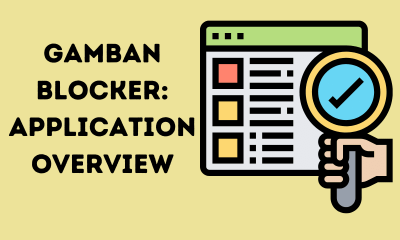Aware of this interest, global organisms such as the International Monetary Fund and theFinancial Action Task Force (FATF) has created a series of control measures to tacklemoney laundering, and prevent financing of terrorism and any other criminal organization. Regulators complying with these controls in their jurisdictions must provide the necessaryguidelines to their licensed operators; translating them into protection mechanisms toprevent that the next VIP they reward is another layman.or criminal kingpin. Although compliance of the AML/CFT controls is mandatory for operators, customers areequally responsible for their behavior, and legal action will proceed if they are foundengaged in suspicious behavior. Not knowing the law is not an excuse for its compliance.
Money Laundering and Terrorist Financing.
Drug trafficking, smuggling, and even tax evasion are highly profitable crimes that face ahard time trying to conceal their massive profits. Terrorists also depend on the coverage oftheir income sources as they require supplies from food to the weapons needed to supporttheir activities. This also includes the payments and even compensation of their militants andfamilies of terrorist and criminal organizations. For these unlawful elements, money laundering is the only way to achieve the legitimizationof their income. Despite the complex schemes created, money laundering works by using 3 simple, yetcritical steps.
Placement
Money enters into the financial system, retail market, or even smuggled to anothercountry. The aim is to evade authorities and transform the criminal proceeds into otherassets.
Layering
In order to keep anonymity, any possible audit that can disclose the real source of incomemust be diverted. to blur their tracks, money launderers create deep, complex layers offinancial transactions.
Integration
Once the proceeds are assimilated into the legitimate economy and returned with theappearance of being legally earned, the laundering process can be considered complete. Along with covering assets from illegal operations, money laundering creates a hugedistortion in target economies as 2 – 5% of global GDP, or $800 billion – $2 trillion in currentUS dollars is reported to be laundered.
The Gaming Stigma
The gambling industry has always been tied to a love-hate relation with crime. Greatlypracticed during the prohibition, it has now become the top choice for laundering operations. There are two main forms of money laundering involving gambling Standard money laundering: The exchange of criminally obtained money, assets,goods, and property through gambling activities to make them appear legitimatelyobtained. Lifestyle spent: Using criminal proceeds to fund gambling as a leisure activity.With the appearance of online gambling, the opportunity to speed up things wasn’t second-guessed. Instead of getting exposed by delivering a cash juggernaut to land casinos, online launderingoperation allows the creation of numerous accounts funded with prepaid or stolen cards. After having a couple of innocent flutters the money is withdrawn, ironed, and folded to itsreal purpose. Operators are aware of the practice but the huge spread makes it almostunnoticeable to track down the real source of these practices. This doesn’t mean that operators can wash their hands of guilt. In 2018, The UK GamblingCommission landed a 6,2M fine to William Hill for critical vulnerabilities regarding theprotection of their customers and the industry from criminal practices. In weaker jurisdictionsthe lack of enforcement allows these operations to flourish for longer periods.
KYC for Operators
Gaming operators are responsible for fully identifying their customers and source of funding.The procedure is mandatory and it should be enforced before customers make their first bet.However, it has become a common practice to carry these document verifications only whencustomers start online gambling with no verification and then want to withdraw their funds.And in some cases, when these withdrawals exceed a certain amount. That kind of approach has only provided an exploitable gap where microtransactionsbecome prevalent as is one of the many procedures criminals have to sort all the preventivebarriers. If a customer becomes suspect of criminal activities, operators are obligated to freeze theaccount until its complete disclosure. The process can become challenging considering howcriminals can easily obtain fake, stolen, and even legit government-issued ID for theiroperations. Despite criminals having a step further than regulators, having the proper preventionthe measure can greatly limit the harm they can cause.
Risk Assessment AML/CFT
Instead of hunting down each and every existing money launderer, THe ATF established 3criteria to assess the risk factors that criminals take advantage:
Identification
Potential risks that can encourage illegal financing operations are listed through thedetection of systematic flaws based on customers, services, and location context.
Analysis
By performing a holistic understanding of each of the risks previously identified, thelikelihood of occurrence and the current control employed to allow the creation of scenarioswhere outcomes of measures are studied, leading us to,
Evaluation
At this point, risk management and mitigation strategies are applied while monitoring theirimpact on prevention and control against money laundering and terrorist financing. Theoutcome of the strategies is reidentified in order to detect any residual breach.
Final Words
The war against criminal organizations trying to introduce their gains into the legit economyfor their upkeep is a never-ending one. The pursuit of profit for the profit itself has led to thisunbalance and tarnished reputation paired with those of criminal nature. The day where gambling companies fully comply with the recommended measures toprotect customers and themselves and even promote ethics as a source of value, not eventhe largest criminal syndicate will be able to breach its trust and transparency. Thank you for visiting techfollows.com.








